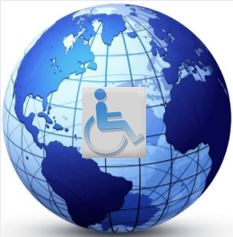Position Paper

AEMA has a very distinct and solid view of the direct sales and installation of Accessibility products into the marketplace. Click AEMA Position Paper for the Position Paper.
AEMA 12106 Colwick San Antonio TX 768216 Phone: (309) 397-5074 E-mail: secretary@aema.com
Position Paper
The Accessibility Equipment Manufacturer’s Association (AEMA) does not support the installation or servicing of accessibility lifts by inexperienced persons.
Comment:
In the past few years, there has been an increase in the concept of providing lifts over the internet and from storefronts or warehouses with the intent that the end-user (consumer) is expected to perform his or her own installation and servicing.(Self-installation). The practice is most evident with stairway chair lifts, but vertical platform lifts and other accessibility lift models, both used and new are also available through this marketing method.
AEMA does not support the concept of self-installation!
Marketing to consumers via the internet or a storefront or elsewhere may initially appear to be acceptable. The perception is that it provides accessibility equipment at a lower cost for those who can least afford it. However, it may also create a hazard to the consumer! How does the consumer ensure that the equipment is installed:
- In a safe manner?
- In a manner that ensures operational safety?
- In conformance with local codes and regulations?
Providers of equipment that is marketed direct to consumers have a responsibility to ensure that it is installed and serviced by experienced technicians.Accessibility Lifts today are quite sophisticated both mechanically and electrically/electronically. It is not reasonable to assume that a person unfamiliar with lifts and their installation or service requirements would be aware of the potential hazards likely to be encountered if a lift is not installed or serviced correctly. With current technology, that knowledge is only available when experienced technicians are utilized.
Some points of interest:
- Many jurisdictions require a lift to be installed in conformance with local or National Codes. In many localities, the codes referenced are the ASME A17.1, the A18.1, and the NFPA70 (National Electrical Code). A consumer installing a lift would not be familiar with the safety requirements of the applicable codes such as clearances, electrical safety, proper anchoring, etc. Such non-conformance to the codes may make the installation unsafe.
- Licensing and permitting required. Many jurisdictions require a lift to be installed by a licensed, trained technician and the lift inspected by the local authority having jurisdiction prior to placing it in service.
- The potential hazards of “self-installation” apply to both used and new equipment. There are many “used” lifts available on the market today. It is the position of AEMA that all lifts, new or used, must be installed and serviced by experienced technicians.
Common sense would seem to dictate that the installation or servicing of any equipment intended to transport people should require the service of an experienced technician. This is especially true for the elderly and disabled members of our communities.
Your input is welcome. Send your comments or suggestions to secretary@aema.com